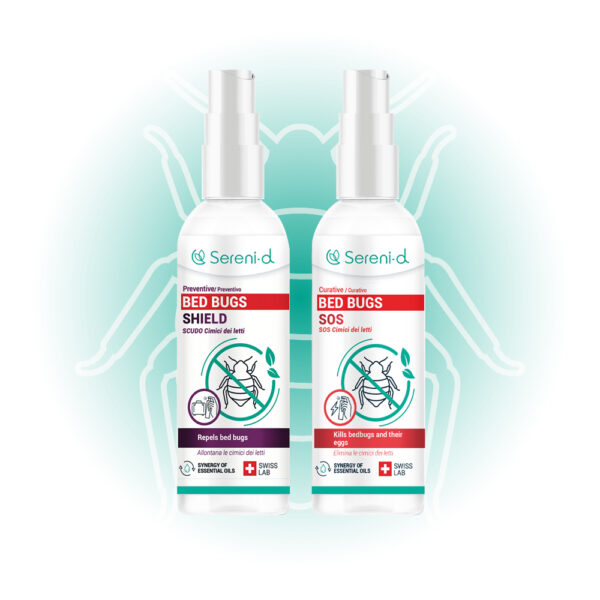Have bed bugs invaded your home? Quick detection of the nest is essential to limit and treat an infestation. Here are our practical tips.
In brief
➡️ A bedbug nest contains eggs, nymphs and adults, with black spots of excrement and sometimes moulted skins.
➡️ Bed bugs mainly hide in mattresses, bed bases, cracks, skirting boards and furniture near the bed.
➡️ To find a nest, inspect bedding, furniture and dark corners with a torch and magnifying glass, ideally at night when they are active.
➡️ Canine detection is the most reliable method for quickly locating all sources of infestation.
➡️ Comprehensive treatment is essential: vacuuming, washing at high temperatures, heat AND chemical treatment, repeated at 7-10 day intervals.
Where do bed bugs hide?
Bed bugs are discreet insects that spend most of their lives hidden in dark, narrow places. Here are their favourite hiding places.
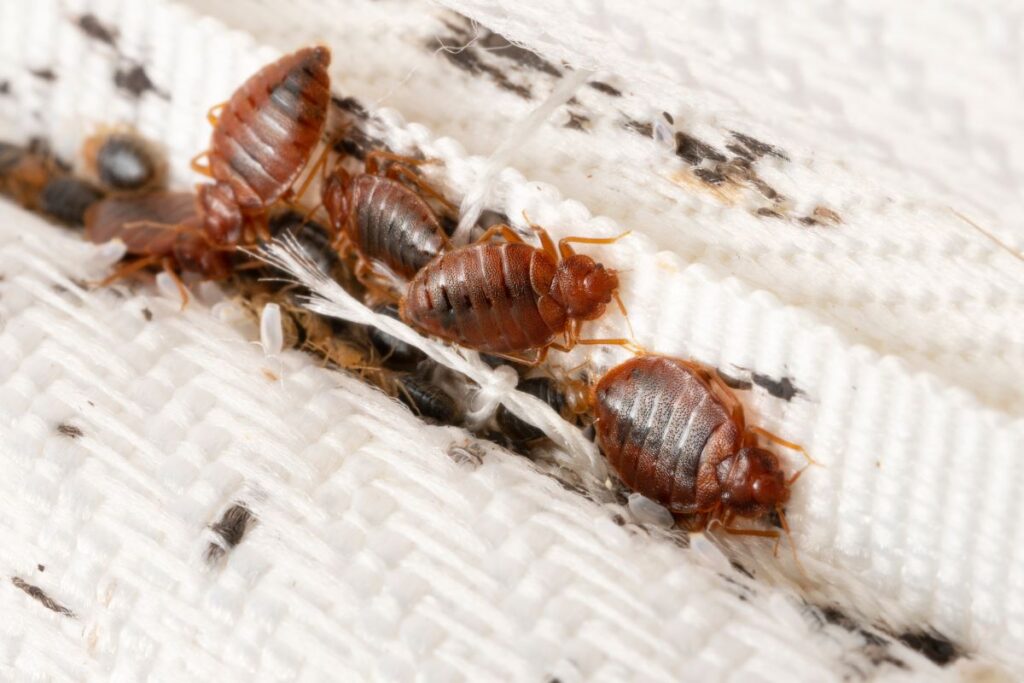
Mattresses, box springs and headboards
The seams, folds and corners of mattresses are very popular with bed bugs. This allows them to stay close to their food source (you) at first. If the infestation is not treated, bed bugs will eventually move and create nests further and further away from the bed.
Inspect the edges, seams, zips and the inside of bed bases, where they also lay their eggs.
Another possible hiding place: headboards (wooden, fabric or leather). Bed bugs often leave traces (excrement, eggs, moulted skin) here.
➡️ See also: Bed bugs in a mattress: what to do?
Skirting boards, cracks and walls
Bed bugs love to hide in cracks in walls, behind skirting boards, under loose wallpaper or at the junction between the floor and the wall. These dark spaces provide ideal protection.
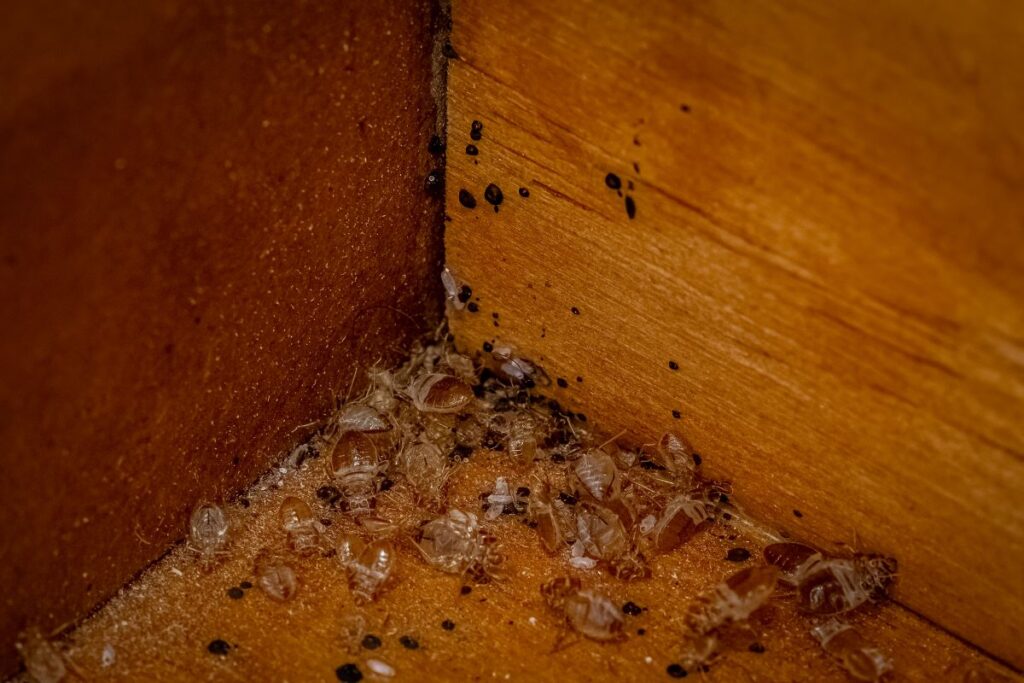
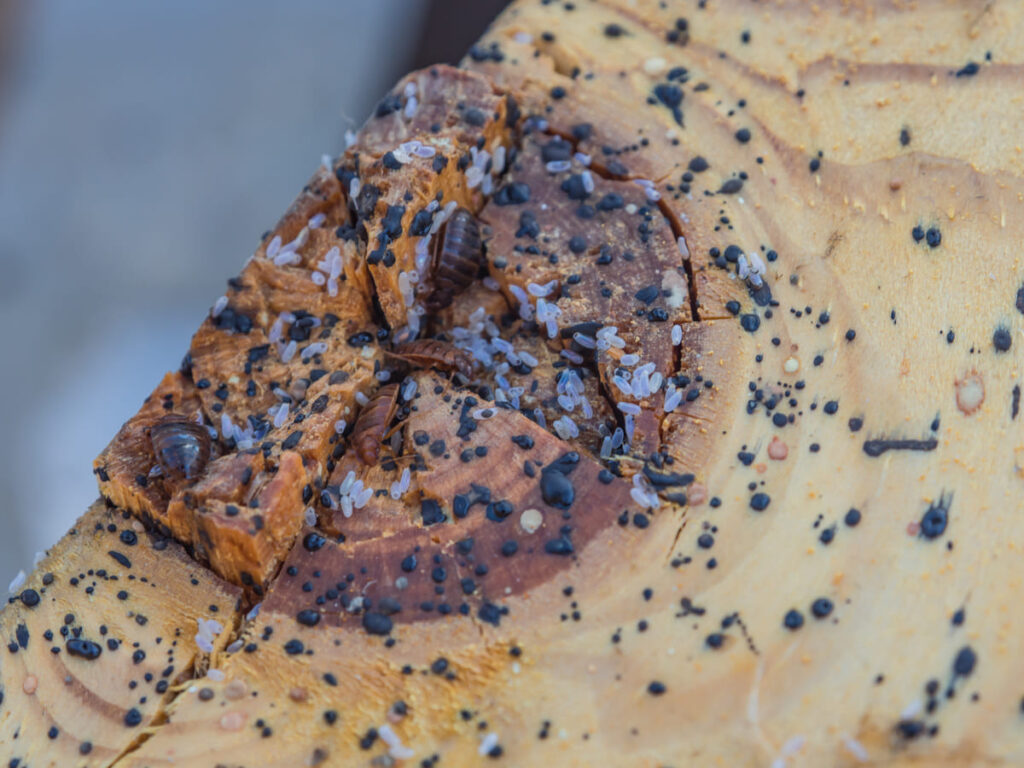
Furniture near the bed
Bedside tables, bed frames, shelves and any furniture near the bed may be infested, especially in cases of advanced infestation. Check every crack and crevice.
Bed bugs love rough textures such as untreated wood.
Electrical outlets, picture frames and wall objects
Electrical outlets, light switches, picture frames and other wall objects are typical hiding places in cases of severe infestation. Their small size allows bed bugs to enter these narrow spaces for protection.
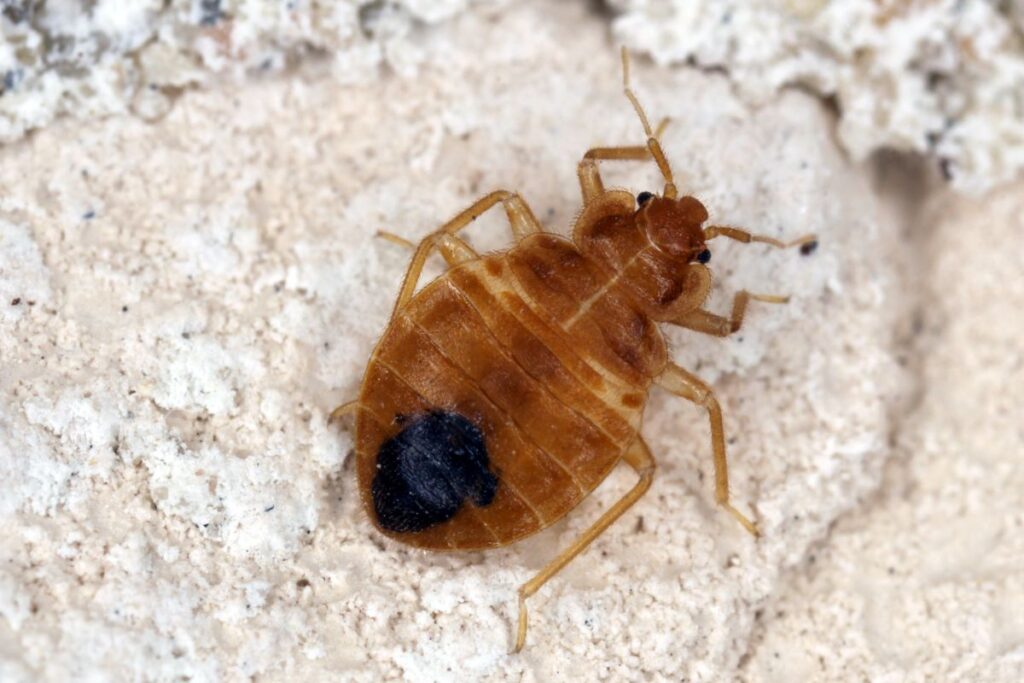
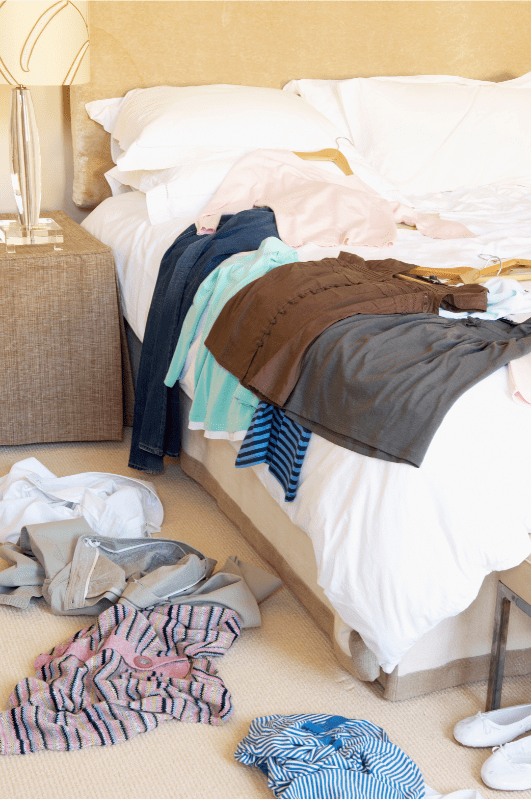
Clothing and textiles
Be careful with clothes left near the bed! This is a common source of contamination in other homes. Bed bugs can also hide in curtain hems, under rugs and behind picture frames.
➡️ See also: Washing clothes contaminated with bed bugs.
Suitcases and bags
Suitcases, travel bags or backpacks placed near the bed are clearly risky situations when accommodation is contaminated. Bed bugs easily settle in them and travel from one place to another.
➡️ See also: How to avoid bed bugs when travelling?
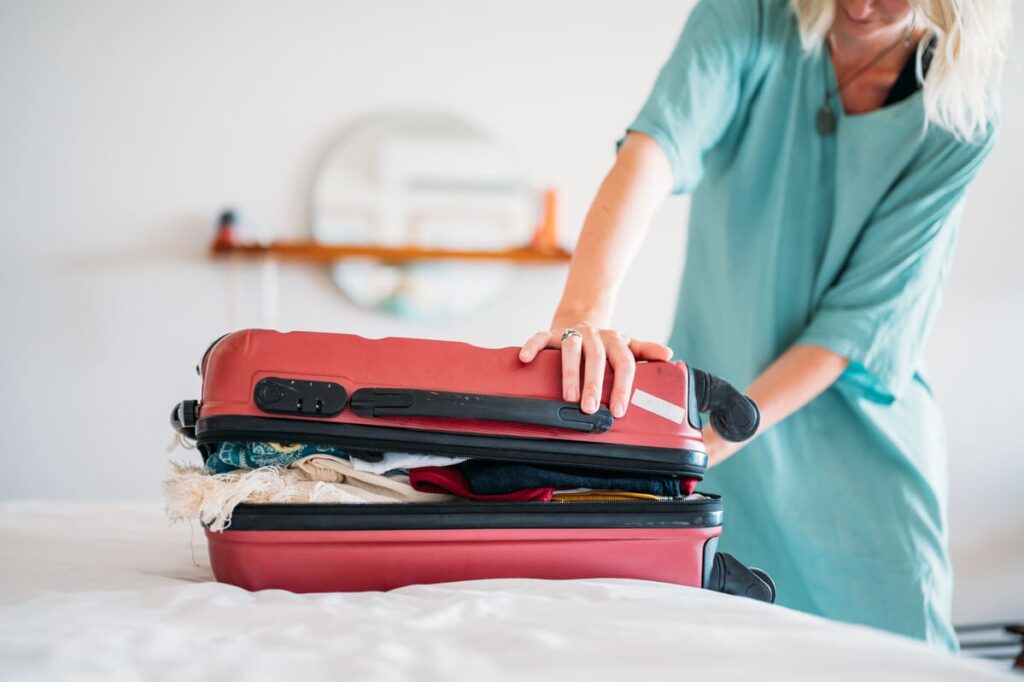
Key points:
Bed bugs avoid light and stay close to their host, so the bed and surrounding furniture should be inspected first.
What does a bed bug nest look like?
A bed bug ‘nest’ does not look anything like a wasp or ant nest. It is more like a group of bed bugs in different stages of life, gathered in the same hiding place near their food source.
Here’s how to recognise a bed bug nest:
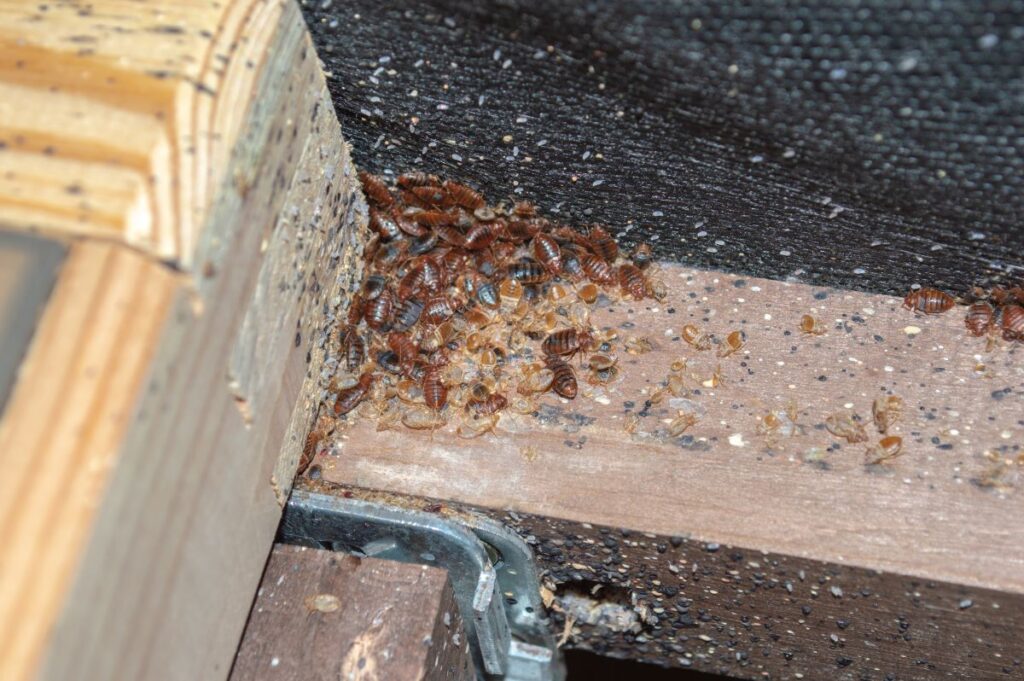
Presence of live and dead insects
You will find bed bugs of all sizes:
- Nymphs (immature stages): translucent to yellowish, measuring 1 to 4 mm.
- Adults: brown, the size of an apple seed (5 to 7 mm).
Presence of eggs
The eggs are tiny (about 1 mm), white and slightly shiny. They are often stuck in clusters to surfaces (seams, wood, cracks) thanks to a waxy substance that makes them difficult to remove.
Presence of exuviae (moulted skins)
Bedbugs moult 5 times before reaching their adult size. You will therefore find small translucent skins in their hiding places.
Traces of excrement
These are small black or dark brown spots, similar to ink stains, formed by their droppings. They are very characteristic of a bed bug nest.
Characteristic odour
A large nest often gives off a pungent, sweet smell, sometimes described as the smell of rotten fruit or mould. This is caused by pheromones secreted by bedbugs to communicate and mate.
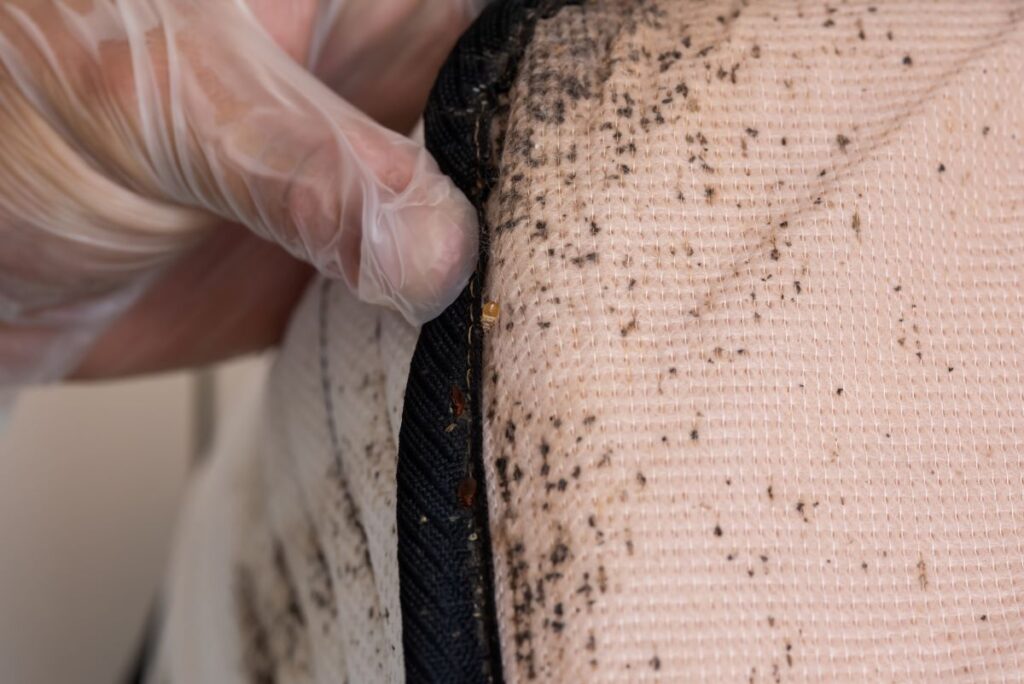
Finding bed bug nests: the step-by-step method
Here are our tips for locating the nesting site and confirming an infestation before considering treatment.
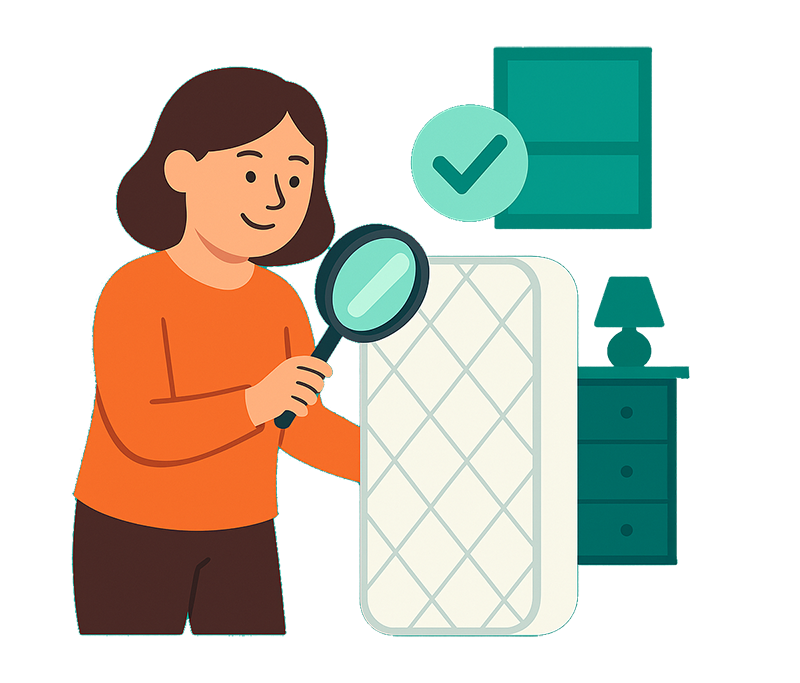
1) Inspect the bedding first
Start with the bed, as this is the main hiding place for bed bugs.
✅ Remove all sheets, pillowcases and blankets.
✅ Check the seams, folds and labels on the mattress: use a torch to see better.
✅ Examine the slats and bed base, especially if they are upholstered. Bedbugs like to hide under stapled fabric and in cracks in the wood.
2) Check furniture and dark corners
✅ Inspect all furniture near the bed: bedside tables, nightstands, dressers.
✅ Look under drawers, behind frames, in cracks in baseboards and along walls.
✅ Curtains, carpets, hanging or folded clothing can also harbour bedbugs, especially in cases of advanced infestation.
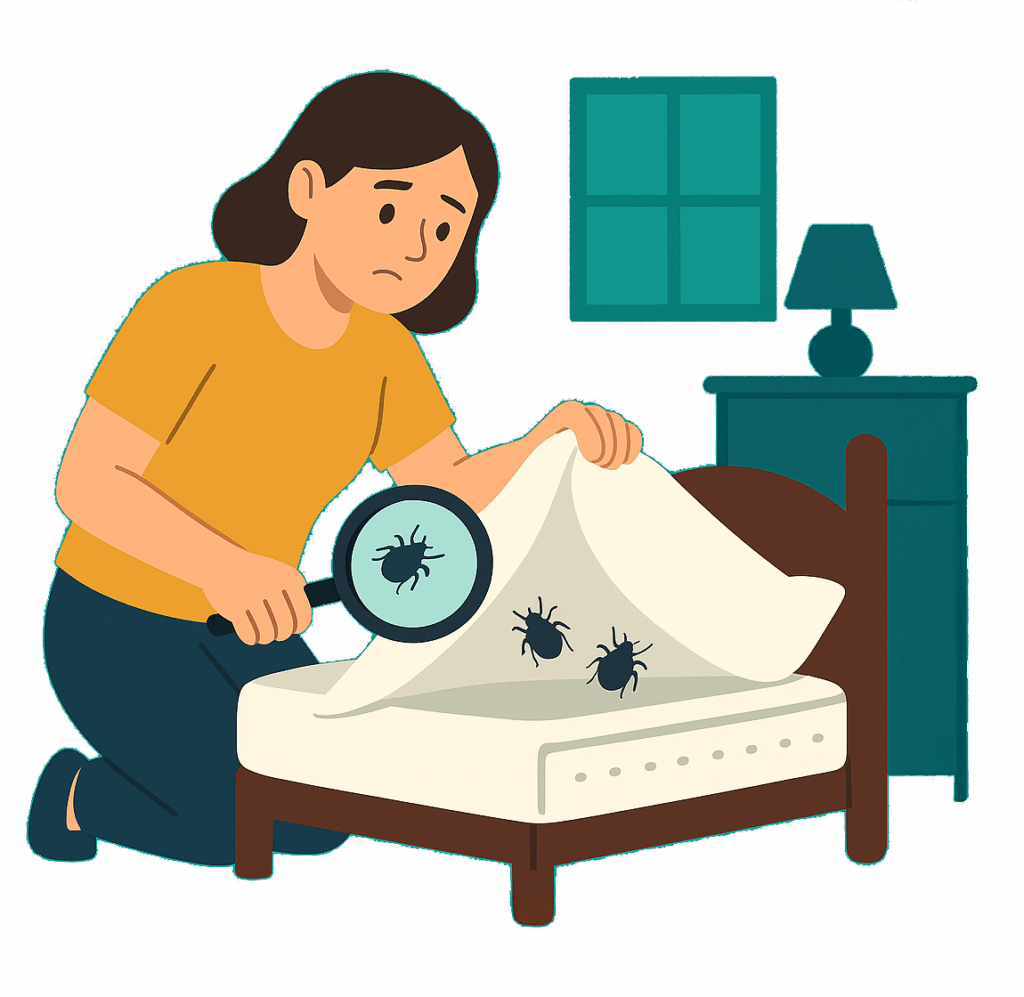
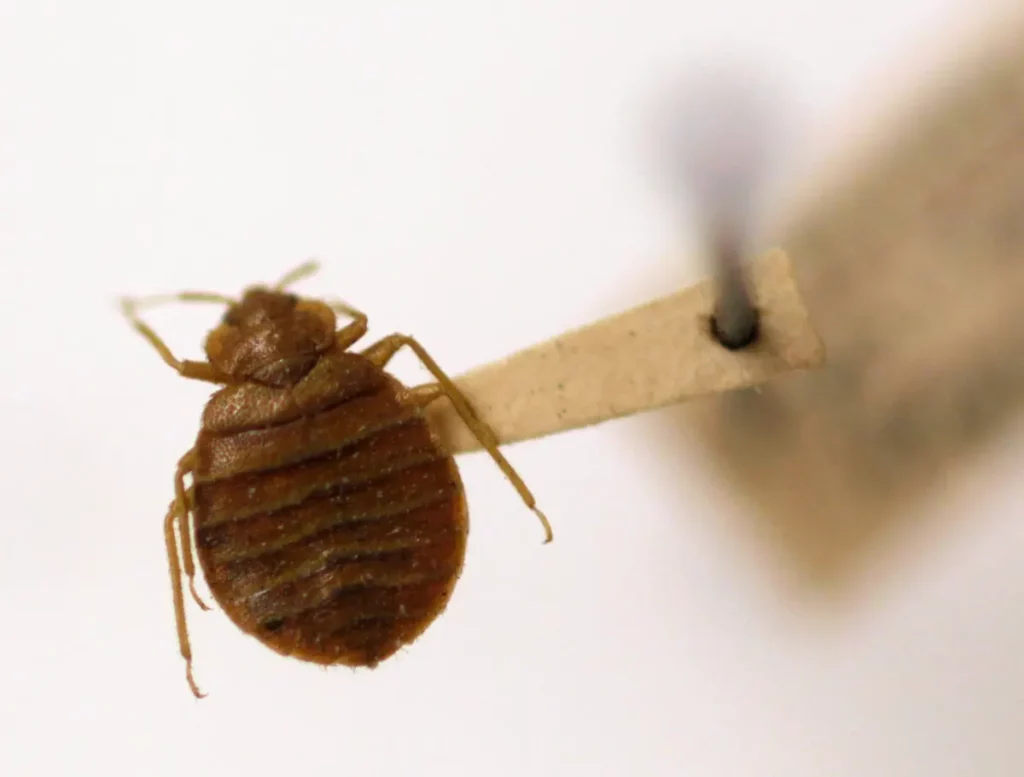
3) Inspect at night
Bed bugs are nocturnal insects.
To confirm their presence:
✅ Turn off the lights at night and then turn them back on suddenly to see them moving.
✅ You can also observe their movements on the mattress or even on your body if you sleep for a few minutes with the lights off.
Feel free to use a powerful torch to illuminate dark corners. A magnifying glass can also be useful for inspecting eggs, which are very small and stick to surfaces.
4) Use the canine detection method
If you cannot locate the bed bug nest, canine detection is the most reliable method (95% effective).
Detection dogs are trained to locate bed bugs using their sense of smell, even in hard-to-reach areas.
Canine detection can be used for prevention, detection and after treatment.
➡️ See also: All you need to know about canine detection
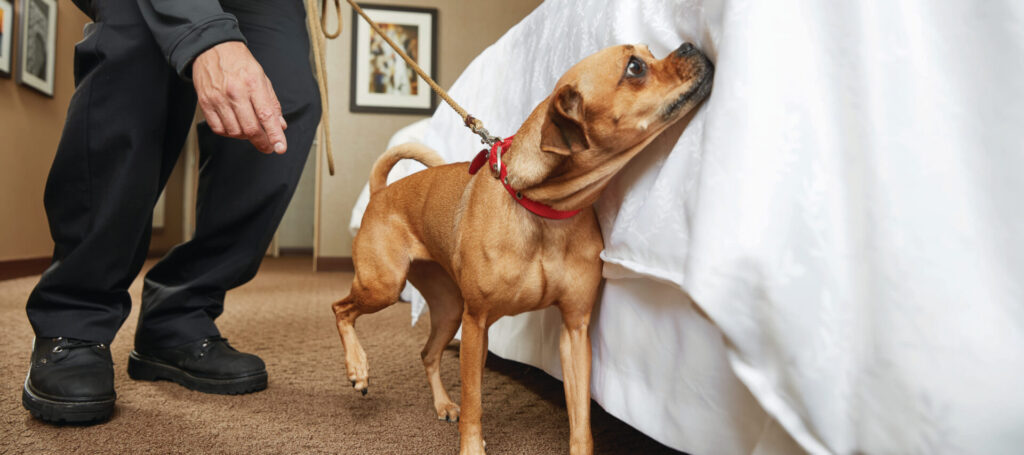
How to destroy a bed bug nest?
Once the nest has been located, it is essential to act quickly and effectively. Here is what you need to do to eliminate a bed bug nest and prevent it from returning.
Targeted treatment or comprehensive treatment?
Targeted treatment involves eliminating only the visible infested area (e.g. mattress, bed base). This can be useful at the very beginning of an infestation, but it is rarely sufficient.
⚠️ Important to know:
Even if you find only one nest, bed bugs move quickly and often form satellite colonies elsewhere in the home.
Comprehensive treatment is essential in the event of a confirmed infestation. This involves treating all potential hiding places in the room (skirting boards, electrical sockets, furniture, cracks) to eradicate eggs, nymphs and adults.
Unfortunately, bedbugs are difficult to eliminate because:
➡️ The eggs are protected by a waxy shell that is highly resistant to conventional insecticides.
➡️ Nymphs need a blood meal at each stage, but can survive for several weeks without feeding.
➡️ Adults can live up to 12 months without feeding, depending on the ambient temperature. A complete treatment in several stages is therefore essential to eliminate all stages of development and prevent bedbugs from returning.

First steps to take
✅ Vacuum with a narrow nozzle and a sealed bag
- Vacuum thoroughly around the nest, eggs, cracks and seams.
- Dispose of the bag immediately in a sealed bag outside to prevent recontamination.
Throw the bag immediately into a sealed bag outside to prevent recontamination.
✅ Wash your sheets and clothes at a high temperature
- For non-washable textiles, use a steam cleaner at 120°C (this equipment can be rented) or place them in the freezer at -20°C for 72 hours.
- Wash all infested laundry at a minimum temperature of 60°C for 30 minutes.
Call in a professional
If you find bed bugs in several rooms in your home, you need to treat your home quickly. If you feel overwhelmed, call in a professional. Be wary of scams, which are common in this sector.
Choose a service provider with Certibiocide certification (mandatory for the use of professional insecticides) and, ideally, Certipunaise certification.
In principle, a ‘real’ professional follows a comprehensive protocol: thorough inspection, heat and/or chemical treatment in at least two stages (7-10 days apart). They also provide follow-up to check the effectiveness of the treatment.
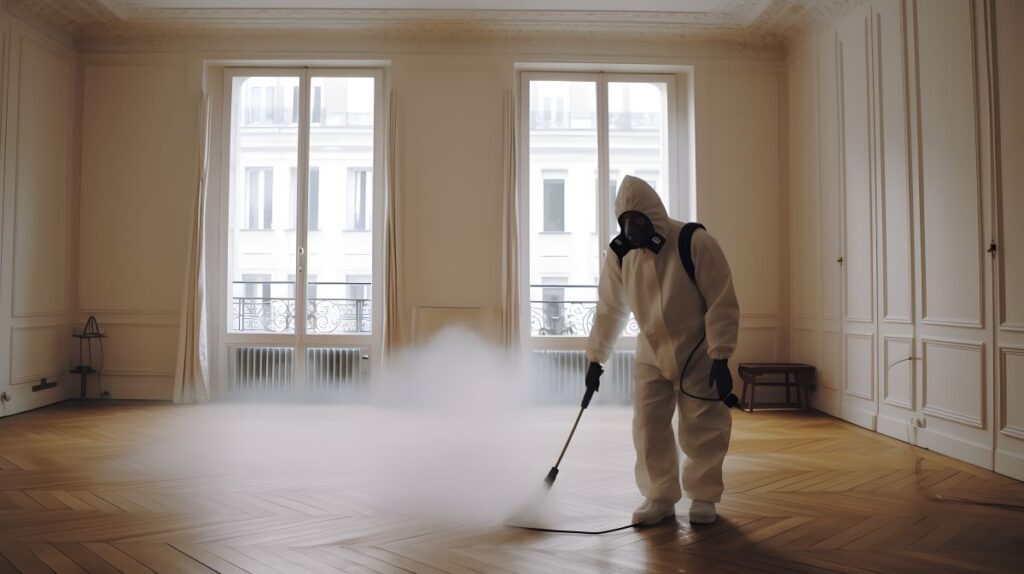
Preventive measures after bed bug treatment
Even after successful treatment, regular vigilance is essential, as bed bugs can reappear weeks or months later if the source has not been completely eradicated.
Apply an anti-bed bug repellent spray
Bed Bug TRANQUILITY KIT
• Preventive and insecticide pack against bed bugs
• Eliminates and repels bed bugs
• Durable, safe and long-lasting protection
• Over 50,000 satisfied Sereni-d® customers
CONCENTRATED FORMULAS – MAXIMUM RESULT
In stock
Protect the mattress with an anti-bedbug cover
Anti-bedbug covers are designed to trap any bedbugs already present in the mattress (which will eventually die) and prevent new bedbugs from settling in.
Choose a model that is certified bed bug proof, fully zipped with an anti-return system. Also check the strength of the seams and whether it can be machine washed at 60°C.
👉 Good to know: for complete protection, there are also covers for pillows and bed bases.


Regularly check areas at risk
✅ Inspect your mattress, bed base and skirting boards every month, especially if you live in a shared building.
✅ Keep an eye on furniture near your bed, curtains, carpets and clothes that have been stored away for a long time without being used.
✅ Be vigilant after travelling or buying second-hand furniture.
If in doubt: Call in a professional dog detector to confirm that there are no bedbugs.

